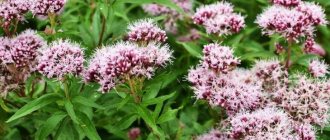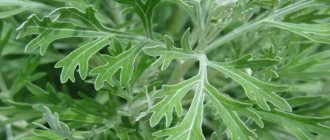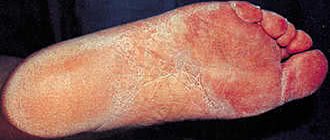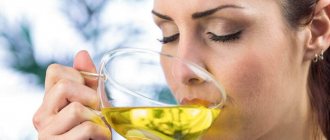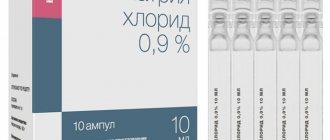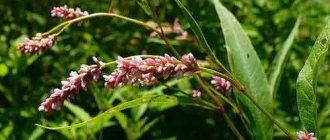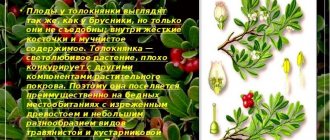Composition and release form
The roots and rhizomes of burnet have medicinal properties, which is why they are harvested. Plant tissue contains several beneficial substances:
- tannins;
- organic acids – gallic, ellagic, oxalic;
- saponin;
- essential oil;
- starch;
- sterol;
- gentriacontan;
- vitamin C.
The product is produced in the form of crushed plant materials, which are packaged in convenient filter bags. They can be stored at normal room temperature. The place should be dry and dark. Keep away from children and keep out of sunlight. The shelf life, subject to the described rules, is 5 years from the date of production.
MEDICINAL BUROOBLET –SANGUISORBA OFFICINALIS L.
Sem. Rosaceae
DESCRIPTION. A perennial herbaceous plant up to 50-70 cm high, with a powerful root system consisting of a thick horizontal rhizome and large branched roots. The stem is branched, ribbed, bare, hollow, with small sessile leaves. The basal leaves are large, long-petiolate, odd-pinnate, with 5-25 leaflets. The leaves are oblong-ovate, with a heart-shaped base, sharply serrated, on short petioles, dark green above, slightly shiny, bluish below. The flowers are collected in short, dense, spicate-capitate dark red inflorescences, sitting at the ends of the branching stems. The flowers are bisexual with two brownish-membranous bracts and a goblet-shaped receptacle - hypanthium; the corolla is missing; sepals, four in number, dark red, attached to the margin of the hypanthium; 4 stamens, their threads are red; pistil with a filiform style and a capitate stigma. The fruit is a nut in a hardened receptacle. Blooms from June to August; the fruits ripen in September-October.
RAW MATERIALS. For treatment, dried rhizomes and roots of burnet (Rhizoma et radix Sanguisobae) are used, which are pieces of cylindrical or irregular shape, of varying lengths and thicknesses, but not longer than 20 cm, black-brown on the outside, yellowish at the fracture. There is no smell, the taste is very astringent. The finished raw material must contain no less than 14% tannins, no more than 13% moisture, no more than 12% total ash, no more than 5% crushed burnet parts passing through a sieve with a hole diameter of 2 mm, no more than 5% of browned and blackened rhizomes at the fracture. 10%. Shelf life is no more than 5 years.
DISTRIBUTION AND PROCESSING. Burnet grows in wet meadows, among bushes, on forest edges, on grassy slopes and forest clearings.
The roots and rhizomes of the burnet are dug up in August-September, when its dark red inflorescences are clearly visible. The dug up raw materials are shaken off the ground, washed, and the stems are cut off. It is convenient to wash burnet rhizomes in baskets placed in running water. Then the rhizomes are cut into pieces up to 20 cm long and laid out to dry. Dry in the sun, under canopies, in attics or in dryers at a temperature of 40-50°C.
CHEMICAL COMPOSITION. Rhizomes with burnet roots contain up to 20-23% mixed tannins, with a predominance of hydrolyzable tannins. In addition, they contain free gallic and ellagic acids, up to 4% triterpene saponins (the main one is sanguisorbin, which gives sanguisorbigenin and arabinose upon hydrolysis), sterols, coloring matter and essential oil. Burnet leaves contain flavonoids and ascorbic acid.
APPLICATION. Burnet has an astringent, antihemorrhagic effect, slows down intestinal motility, antispasmodic, angiospastic, bactericidal effect on microorganisms of the dysenteric and paratyphoid groups. The high content of tannins determines the astringent, anti-inflammatory and hemostatic effect of burnet preparations. They are used for a number of gastrointestinal diseases (enterocolitis, intoxicating diarrhea, etc.). They are used as an anti-inflammatory agent in the treatment of gingivitis and stomatitis, as well as a number of skin diseases; It is prescribed as a hemostatic agent for uterine and hemorrhoidal bleeding. The roots and rhizomes are used to prepare a decoction, liquid and dry extracts. In addition, they are part of a number of antidiarrheal preparations.
In folk medicine, burnet is used as a hemostatic agent for gastric and pulmonary hemorrhages, heavy menstruation, diarrhea, dysentery, intestinal catarrh with bloody feces, inflammation of the veins of the legs, and surgical operations in the oral cavity.
RECIPES
Decoction:
a) infuse half a teaspoon of crushed burnet rhizome in one (strong dose) or two (weaker dose) glasses of water for 8 hours, then boil and strain; use 2-3 tbsp. spoons a day after meals.
A decoction of rhizomes with roots and an infusion of herbs are used for a rush of blood to the head, more often for hypertension. Externally, a decoction of rhizomes and roots is used in the form of wet compresses for various skin inflammations and as rinses for inflammatory processes in the mouth and throat, as well as for sitz baths for external hemorrhoids;
b) 1 tbsp. boil a spoonful of chopped rhizomes with roots for 30 minutes in 1 tbsp. water, leave for 2 hours, strain. Take 1 tbsp. spoon after 2-3 hours for diarrhea.
Externally:
a) 2-3 tbsp. Scald spoons of herbs with boiling water, wrap in gauze; apply the pads to sore spots as a pain reliever;
b) 2 tbsp. Boil tablespoons of roots for 30 minutes in 1.5 cups of water, leave for 2 hours, strain. Use for lotions, washes and wet compresses for inflammatory skin diseases.
Liquid burnet extract is prepared in 70% alcohol. Take 30-50 drops 3-4 times a day as an astringent and hemostatic agent.
USE IN NUTRITION
Fresh young leaves are used, which resemble cucumbers in taste and smell. In Siberia, they eat frozen rhizomes boiled in water or milk.
Burnet leaf salad
100 g burnet leaves, 20 g green onions, dill, 2 tbsp. spoons of sour cream, salt.
Wash fresh young leaves, chop finely, mix with green onions and dill, add salt and season with sour cream.
Kissel from the rhizomes of Burnet officinalis
100 g burnet rhizomes, 1 glass of milk, butter, sugar.
Wash the rhizomes, freeze them, then chop them finely, add milk, and cook until tender, crushing and grinding them during the cooking process. Add butter and sugar to taste.
Serve chilled.
Pharmacology
The name of the plant is due to the fact that it has a hemostatic effect. Burnet also provides astringent, antiseptic and anti-inflammatory effects. The plant contains various substances. Thus, vitamin C has the following beneficial properties:
- strengthens the immune system;
- increases resistance to harmful factors, including poisoning;
- has antioxidant properties;
- prevents cell destruction;
- improves skin condition;
- activates collagen synthesis;
- helps absorb iron;
- strengthens the walls of blood vessels;
- helps normalize blood pressure;
- prevents fatigue.
The tannins that make up burnet are also beneficial for the body:
- antibacterial effect;
- slowing down the aging process;
- removal of toxic substances from the body;
- antioxidant effect;
- prevention of cancer;
- improved digestion;
- anti-inflammatory effect;
- removal of kidney stones;
- prevention of leukemia.
Saponins have the following medicinal properties:
- removing excess fluid from the body;
- mild laxative effect;
- stimulation of the synthesis of corticosteroids;
- lowering cholesterol levels;
- strengthening the immune system;
- expectorant action.
Sterols also have a similar effect. Even in small quantities, they have been proven to help lower bad cholesterol levels. Therefore, taking burnet prevents the development of atherosclerosis, as well as stroke and heart attack.
Contraindications and side effects
In some cases, taking the drug is contraindicated:
- individual intolerance to any component;
- children up to 17 years of age inclusive;
- pregnancy (all trimesters)
- lactation.
If a tendency to increased blood clotting or thromboembolism has previously been observed, burnet should be used with caution and only in consultation with a doctor.
In rare cases, itching, swelling, rashes and other allergic manifestations are possible. During long-term therapy, increased blood clotting may also occur. In such cases, treatment should be suspended and a doctor should be consulted.
Instructions for use
The therapy uses an aqueous infusion of burnet roots. To prepare it, proceed as follows:
- Take 3 filter bags (content weight 4.5 g).
- Place in a glass or enamel glass.
- Pour 200 ml of boiling water.
- Close the lid and leave for 15 minutes.
- Squeeze and bring to a total volume of 200 ml.
- Take half a glass 4 times a day.
The day before use, the decoction should be stirred or shaken. It is not subject to long-term storage - as a last resort, you can put the glass in the refrigerator for no more than 2 days.
Burnet (Sanguisorba officinalis L.)
1. Atlas of medicinal plants of the USSR / Ch. ed. N.V. Tsitsin. - M.: Medgiz, 1962 - 702 p.
2. Blinova K. F. et al. Botanical-pharmacognostic dictionary: Reference. allowance / Ed. K. F. Blinova, G. P. Yakovleva. - M.: Higher. school, 1990. - P. 187. - ISBN 5-06-000085-0.
3. State Pharmacopoeia of the USSR. Eleventh edition. Issue 1 (1987), issue 2 (1990).
4. State Register of Medicines. Moscow 2004.
5. . Gorbunova T.A. Atlas of Medicinal Plants. M.: Arguments and Facts, 1995 - 352 p.
6. Ilyina T.A. Medicinal plants of Russia (Illustrated encyclopedia). – M., “EXMO” 2006.
7. Zamyatina N.G. Medicinal plants. Encyclopedia of Russian nature. M. 1998.
8. Medicinal plants: Reference manual. / N.I. Grinkevich, I.A. Balandina, V.A. Ermakova and others; Ed. N.I. Grinkevich - M.: Higher School, 1991 - 398 p.
9. Medicinal plants of the state pharmacopoeia. Pharmacognosy. (Ed. I.A. Samylina, V.A. Severtsev). – M., “AMNI”, 1999.
10. Medicinal plant raw materials. Pharmacognosy: Textbook. allowance / Ed. G.P. Yakovlev and K.F. Blinova. – SPb.: Special. Lit, 2004. – 765 p.
11. Lesiovskaya E.E., Pastushenkov L.V. "Pharmacotherapy with the basics of herbal medicine." Tutorial. – M.: GEOTAR-MED, 2003.
12. Maznev V.I. Encyclopedia of medicinal plants. M.: Martin. 2004 – 496 p.
13. Mannfried Palov. "Encyclopedia of Medicinal Plants". Ed. Ph.D. biol. Sciences I.A. Gubanova. Moscow, "Mir", 1998.
14. Mashkovsky M.D. "Medicines." In 2 volumes - M., Novaya Volna Publishing House, 2000.
15. Novikov V. S., Gubanov I. A. Rod Spruce (Picea) // Popular atlas-identifier. Wild plants. — 5th ed., stereotype. - M.: Bustard, 2008. - P. 65-66. — 415 p. — (Popular atlas-identifier). — 5000 copies. — ISBN 978-5-358-05146-1 — UDC 58 (084.4).
16. Nosov A.M. Medicinal plants in official and traditional medicine. M.: Eksmo Publishing House, 2005. – 800 p.
17. Peshkova G. I., Shreter A. I. Plants in home cosmetics and dermatology. – M.: Publishing house. House of SMEs, 2001. – 688 p.
18. Plants for us. Reference manual / Ed. G.P. Yakovleva, K.F. Blinova. – Publishing house “Educational Book”, 1996. – 654 p.
19. Plant resources of Russia: Wild flowering plants, their component composition and biological activity. Edited by A.L. Budantseva. T.5. M.: Partnership of scientific publications KMK, 2013. – 312 p.
20. Svetlichnaya E.I., Tolok I.A. Etymological dictionary of Latin botanical names of medicinal plants. Kharkov: NUPh Publishing House: Golden Pages, 2003. - 288 p.
21. Sokolov S. Ya. Medicinal plants. - Alma-Ata: Medicine, 1991. - P. 118. - ISBN 5-615-00780-X.
22. Sokolov S.Ya., Zamotaev I.P. Handbook of medicinal plants (herbal medicine). – M.: VITA, 1993.
23. Telyatyev V.V. Useful plants of Central Siberia. Irkutsk East Siberian book publishing house, 1985. — 384 p.
24. Turova A.D. "Medicinal plants of the USSR and their use." Moscow. "Medicine". 1974.
25. “Herbal medicine with the basics of clinical pharmacology”, ed. V.G. Kukesa. – M.: Medicine, 1999.
26. Chikov P.S. “Medicinal plants” M.: Medicine, 2002.
